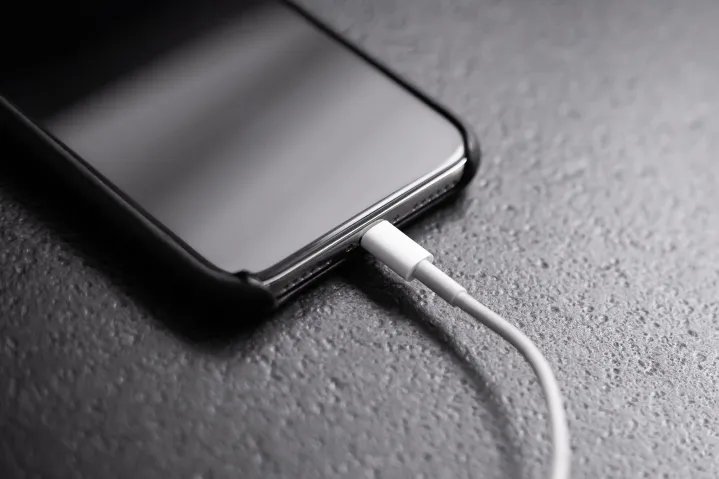The impending arrival of USB-C on the iPhone 15 has generated significant discussion in tech circles. While the promise of faster charging is undoubtedly appealing, it also brings potential challenges, disappointments, and increased expenses for iPhone users seeking top-speed charging.
This anticipation stems from experiences with Android devices.
The Inevitability of USB Type-C
It appears inevitable that the iPhone 15, set to launch on September 12, will feature a USB Type-C port at its base. Beyond the speculations and device renders, European Union regulations concerning standardized device chargers have pushed Apple into this transition. It’s a change that Apple must embrace sooner or later, and it seems they’ve chosen to make the move now.
Cables and ports may not be the most thrilling topics, but for many, the shift from Lightning to USB-C doesn’t go unnoticed. Personally, I’ve accumulated a vast collection of cables over time, ensuring I’m always equipped with the right charging solution for any situation. However, the introduction of USB-C on the iPhone 15 has the potential to pique my interest due to the possibility of significantly faster charging.
The iPhone 14 Pro does offer “fast” charging, provided you possess an Apple charging block capable of delivering 20 watts or more. Nonetheless, it still takes over an hour to fully recharge. In contrast, MagSafe wireless charging, which maxes out at 15W with a compatible charger (or 7.5W with a standard Qi wireless charger), falls short in terms of speed. To put it in perspective, the OnePlus 11’s 80W wired charger can fully charge its 5,000mAh battery in just 30 minutes. It stands as one of the swiftest charging solutions available, and the prospect of having such performance on the upcoming iPhone is undeniably enticing.
Exploring the Pros and Cons of Fast Charging Across Android and Apple Devices
As technology advances, so do our expectations for rapid and efficient charging solutions. This article delves into the world of fast charging, examining its merits and challenges across Android and Apple ecosystems.
When it comes to the OnePlus 11, the need for proprietary accessories for full-speed charging is evident. To enjoy optimal charging speeds, users must employ the bundled OnePlus charging block and a specialized USB cable. In contrast, Apple discontinued supplying complimentary chargers some years ago, yet currently includes a USB-to-Lightning cable with their devices. Attempting to charge the OnePlus 11 with an alternate charger results in significantly slower charging rates.
Meanwhile, Samsung Galaxy S23 Ultra owners seeking to utilize Super Fast Charging must invest in a compatible charging block supporting the USB PD 3.0 PPS standard at 45W and a 5A USB cable conforming to adaptive charging standards. Failure to utilize these components results in sluggish charging speeds, necessitating a $50 expenditure on the correct kit directly from Samsung.
Apple offers a 20W charging block for $19, accompanied by a 1-meter USB-to-Lightning cable for an additional $19. While reasonably priced, these accessories are fairly standard. In contrast, Apple’s 140W charging block for MacBook laptops represents a significant technological leap, featuring gallium nitride (GaN) technology and compatibility with the USB-C PD3.1 standard. However, it comes at a higher cost of $100 without a cable.
Navigating the realm of fast charging can be perplexing, time-consuming, and costly. It is improbable that Apple will include a charging block with the iPhone 15, and any move toward USB Type-C fast charging would entail acquiring new chargers and cables, likely at a premium price. Although non-Apple alternatives exist, Android users face challenges in identifying third-party equipment that adheres to the required standards, often complicated by limited disclosure from manufacturers who prefer promoting their proprietary accessories. OnePlus, for instance, necessitates the use of original equipment due to its proprietary technology for fast charging.
Adding to the complexity, there have been speculations about Apple potentially restricting fast charging and data transfer speeds exclusively to USB-C cables produced under its Made for iPhone program. While unconfirmed, this notion has raised concerns, with the EU expressing reservations about such restrictions.
Acquiring the right fast-charging equipment for modern Android devices can be a labyrinthine and expensive endeavor. The advent of USB-C in the iPhone 15 could potentially simplify matters for new iPhone owners, ushering in a new era of fast charging. Nonetheless, the path forward remains uncertain.
Looking ahead, the implementation of USB Type-C on the iPhone 15 could introduce both clarity and confusion. Apple may have until the end of 2024 to navigate the evolving regulatory landscape, making choices regarding cables, chargers, and charging speeds. This could potentially lead to software updates and further perplexity for consumers.
While Apple is likely to present any transition to USB Type-C and fast charging clearly, underlying complexities will persist. These intricacies involve navigating technology standards, legal requirements, and the ongoing sales of official and certified accessories. Moreover, Apple’s strategies may evolve, potentially resulting in frequent changes. As much as we anticipate fast charging on the iPhone, it remains uncertain whether it will become a straightforward and cost-effective solution for everyone, as experienced with Android devices.
The hope is that these concerns will prove unfounded, sparing us from longing for the return of the Lightning port. However, the EU’s plans to regulate wireless charging in the future may introduce a new set of questions and challenges, much like what we currently experience with MagSafe.
Stay tuned for the evolving landscape of fast charging across Android and Apple devices, where convenience and compatibility remain central themes.

